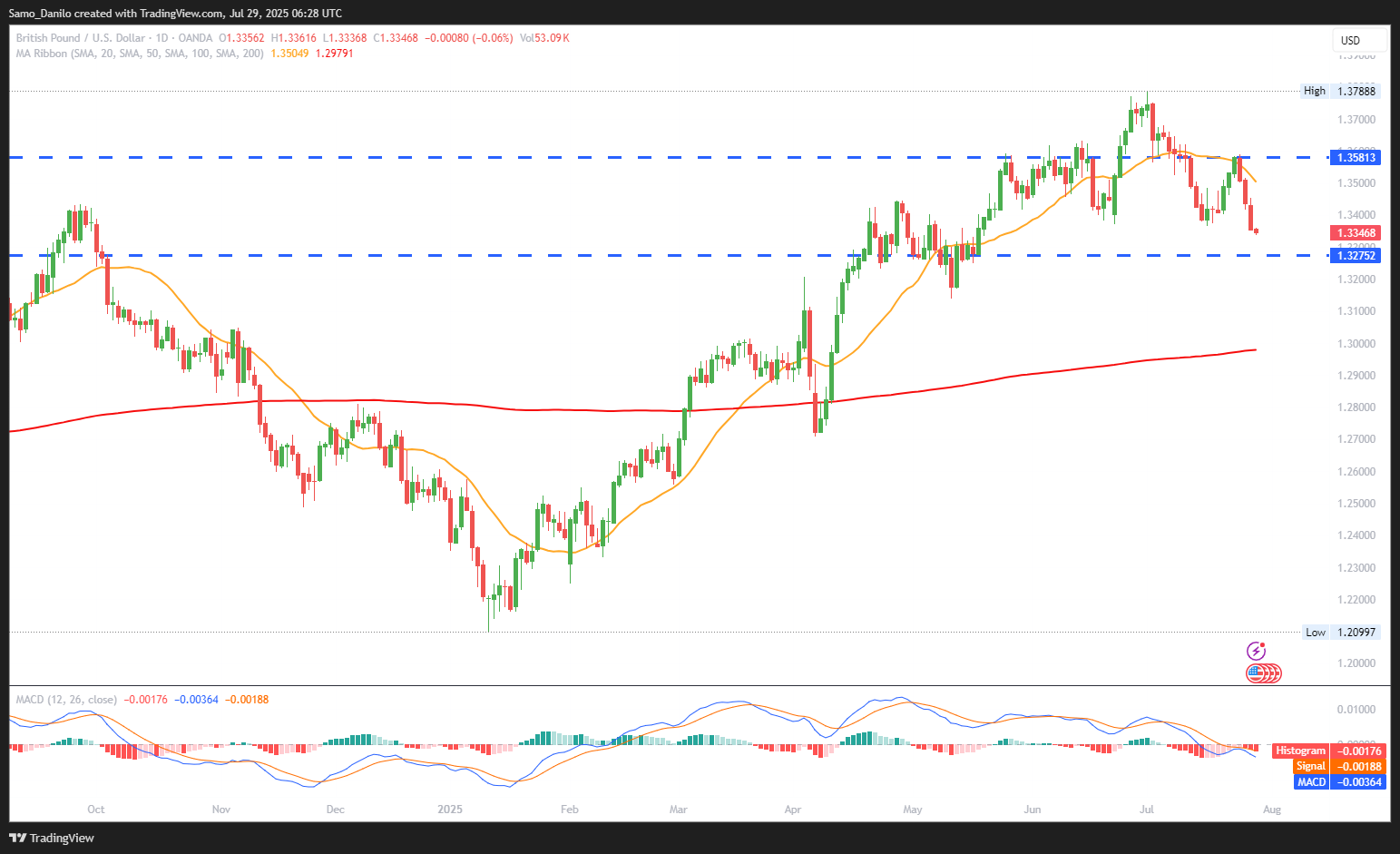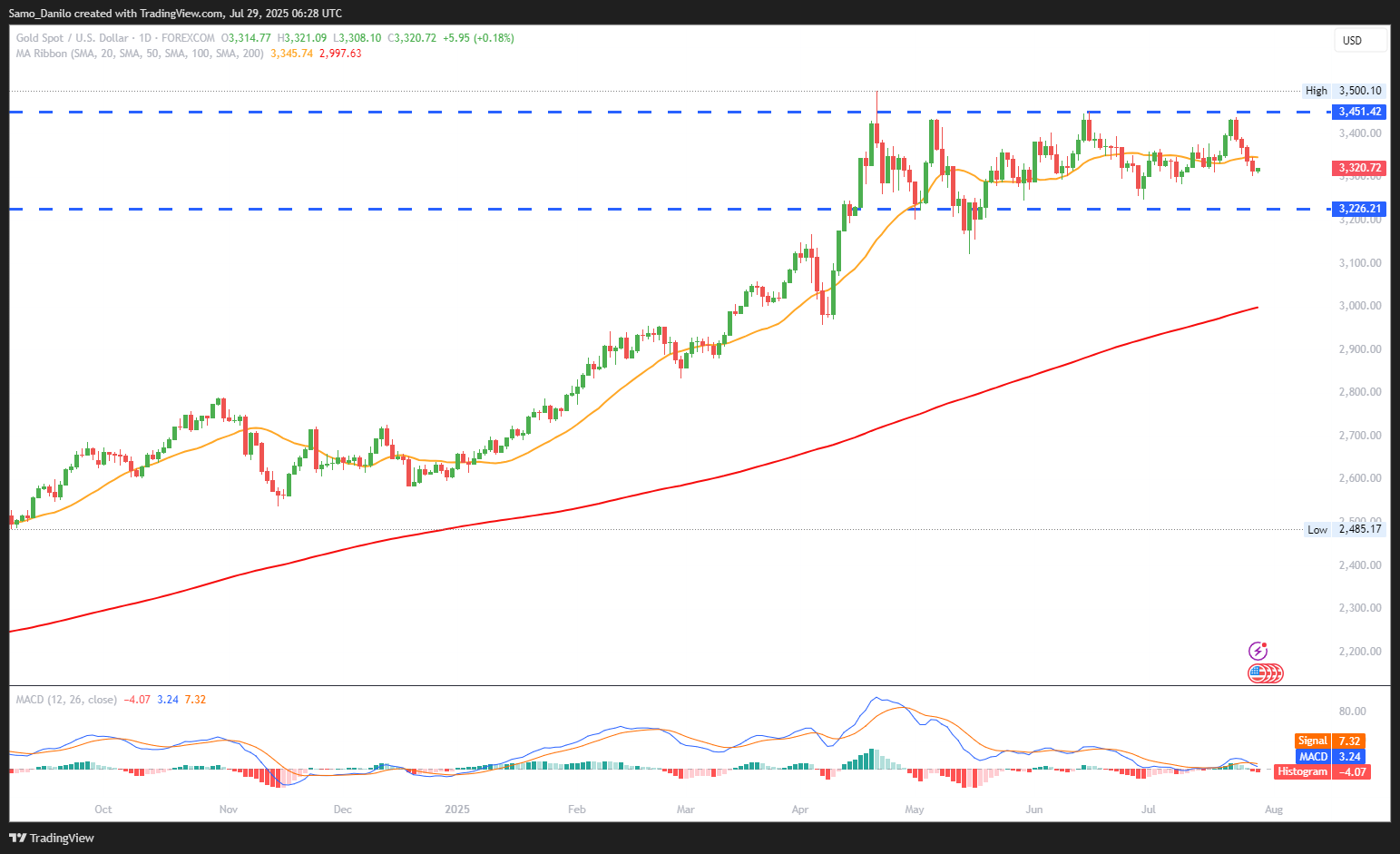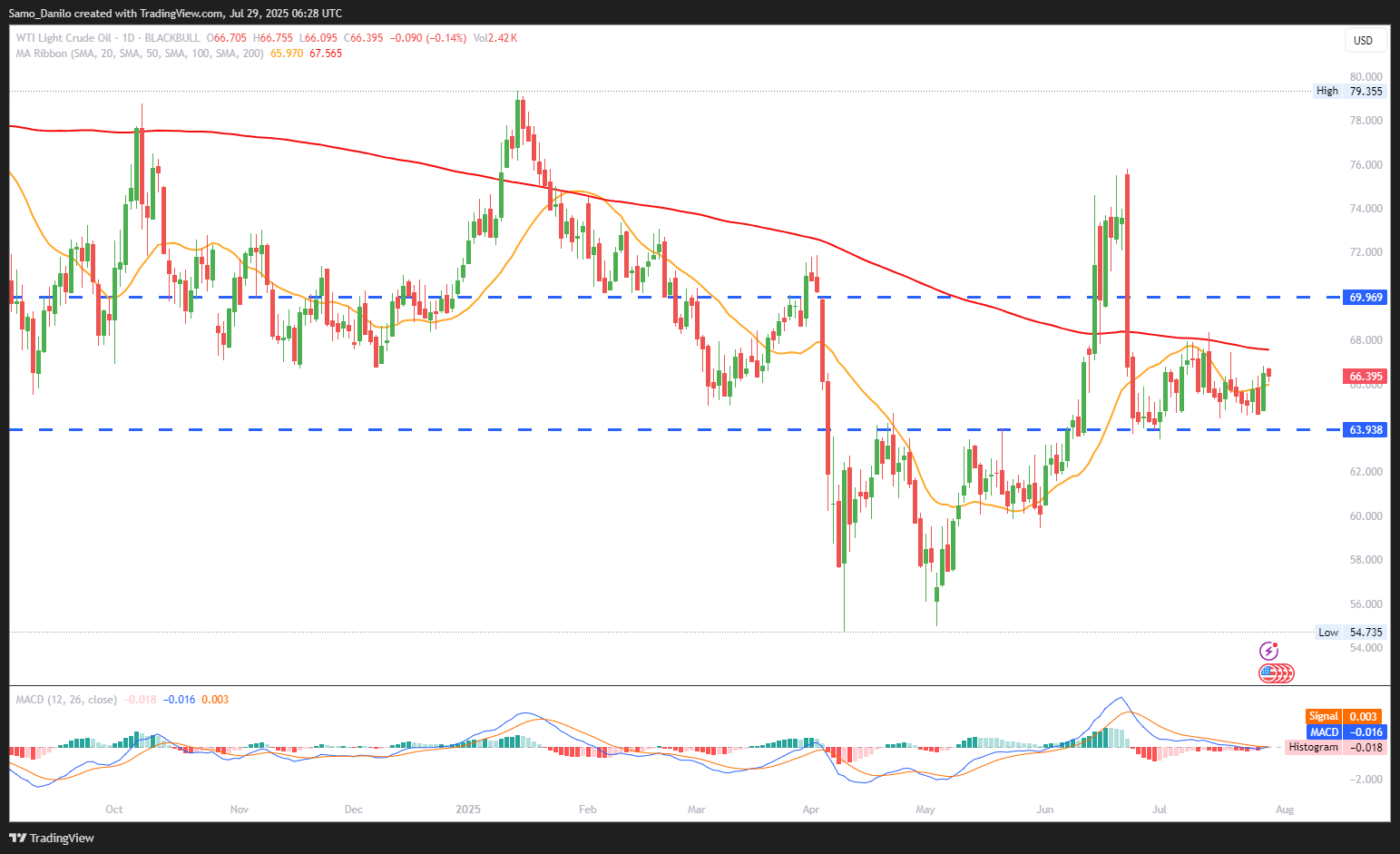EURUSD
- EUR/USD Price: The EUR/USD pair extended losses to around 1.1580 at the start of the trading week, reflecting broad risk-off sentiment and cautious outlooks from both EU and US officials following initial progress on trade negotiations.
- Tariff Deal: EU Trade Chief Sefcovic stated that the current 0% tariff list remains open for additions, and emphasized strategic cooperation over conflict. However, his tone confirmed that the deal is an opening move, not a completed framework.
- US Trade Rep: US Trade Representative Greer signaled progress on auto standards and continued efforts regarding steel trade. His remarks point to a long road ahead for full normalization, keeping EUR/USD sensitive to ongoing negotiation headlines.
- ECB's Kazimir: ECB’s Kazimir said there’s no compelling reason to act in September, adding that inflation risks are balanced, not tilted to the downside. This suggests the ECB may adopt a wait-and-see approach following previous easing steps.
- Market Expectations: Markets are now pricing in a 65% chance of a rate cut in December, down from earlier expectations of September action. With the fiscal side expanding and geopolitical uncertainty easing, many now believe the ECB may have reached the end of its cutting cycle.
Closing statement: EUR/USD remains under pressure as cautious central bank rhetoric and evolving trade dynamics weigh on sentiment. While ongoing EU–US talks offer strategic alignment, the lack of decisive policy action and waning rate cut expectations could cap any near-term upside for the euro.
GBPUSD
- GBP/USD Price: The GBP/USD pair is weakening, heading toward the 1.3350 level amid renewed selling in European trading. The move reflects broader cautious sentiment ahead of major macro events and market repositioning on both sides of the Atlantic.
- UK Retail Sales: The CBI retail sales index fell to -34 in July, marking the tenth consecutive month of contraction, though the drop was less severe than in June. Persistent price pressures and weak consumer sentiment are hampering retail activity and signaling fragility in the UK's economic recovery.
- BoE Rates: Market participants now widely expect a 25 bps rate cut from the Bank of England next week, as labor market softness and economic concerns fuel dovish expectations. This shift adds downward pressure to the pound amid policy divergence.
- Fed Rate: While the Fed is expected to hold rates steady this week, Nick Timiraos of the WSJ highlights that policymakers still see the need to eventually lower rates. The debate within the Fed underscores a data-dependent approach, keeping markets in suspense.
- Key Events: Markets remain subdued ahead of Wednesday’s Fed decision and Friday’s US Nonfarm Payrolls. These events are poised to drive short-term USD volatility, with potential implications for the GBP/USD direction depending on labor data strength.
Closing statement: GBP/USD faces renewed downside risks driven by weak UK retail data and rising BoE rate cut expectations, while the Fed maintains a wait-and-see posture. The pair may remain under pressure until US macro catalysts later in the week provide clearer directional cues.
XAUUSD
- XAU/USD Price: Gold continues to weaken, falling toward the $3,300 per troy ounce level in early-week trading. This key technical zone is offering initial buying interest, though sentiment remains cautious amid mixed macro signals.
- Fidelity Forecast: Fidelity International projects gold prices could hit $4,000 next year, citing a dovish Fed, continued central bank accumulation, and a weaker USD. Such structural drivers could fuel a medium- to long-term rally, despite near-term headwinds.
- Nvidia Export: Reuters reports the U.S. Commerce Department is still holding back export approvals for Nvidia's H20 chips, despite prior assurances. The uncertainty adds to market caution, though its direct impact on gold remains limited for now.
- Market Consensus: A Reuters poll of market participants estimates gold will average $3,320 in 2025 and $3,400 in 2026, reflecting moderate optimism. These expectations show confidence in gold as a hedge against monetary and fiscal imbalances.
- US Treasury: The US Treasury raised its Q3 borrowing estimate to $1.007 trillion, up sharply from April’s forecast. The surge in issuance could revive debt sustainability concerns, which often support safe-haven flows into gold over time.
Closing statement: While XAU/USD remains under near-term pressure, the medium-term outlook is increasingly bullish, driven by monetary policy shifts, fiscal imbalances, and strong central bank demand. Investors may look for signs of stabilization near $3,300 as a potential launch point for further upside.
CRUDE OIL
- Crude Oil Price: West Texas Intermediate (WTI) is trading around $66.40 in European trading, consolidating after a recent move higher. The price has found short-term support amid a mix of geopolitical headlines and trade developments.
- Tariff Deal: The 15% blanket tariff agreement between the US and EU, set to start August 1, lifted crude prices on expectations of short-term trade stability and stronger transatlantic commerce. While a tariff generally implies friction, the predictability of terms offered a temporary boost to market confidence.
- US-China Trade: Reports suggest Washington and Beijing may extend their tariff truce, which reduces the threat of trade-related demand destruction. This dovish shift in trade tensions is broadly supportive of oil demand sentiment in the medium term.
- Trump's Pressure: Trump has dramatically shortened the peace negotiation window for the Russia-Ukraine conflict to just 10–12 days, raising the prospect of new sanctions. If talks fail, aggressive sanctions on Russia could disrupt oil supply routes and pricing, injecting upside volatility.
- Crude Inventory: Markets are awaiting the API weekly inventory report, a key short-term driver for oil prices. A larger-than-expected drawdown could support prices further, while a build might dampen momentum.
Closing statement: Crude oil is stabilizing near $66.40, supported by trade deal optimism and geopolitical risk premiums. Market direction will hinge on API stock data and developments in the Russia-Ukraine situation, with upside potential if risk events escalate or inventories decline.
DAX
- DAX Price: The DAX index experienced a sharp decline on Monday, erasing Friday’s modest uptick to close below the 24,000 level. This marks a renewed wave of investor pessimism, likely triggered by escalating trade tensions and political dissatisfaction in Germany.
- Chancellor Merz: German Chancellor Friedrich Merz expressed discontent with the outcome of US-EU trade negotiations, citing that the agreed tariffs will cause significant economic damage. His remarks reinforce market fears that Germany’s export-heavy economy may face serious pressure ahead.
- Macron Presses: French President Emmanuel Macron is lobbying EU nations to retaliate strongly against what he calls an “unfair” US-EU trade deal. Market participants may view this as a sign of deepening trade rifts, increasing uncertainty for EU-based equities like those on the DAX.
- German Industry: Germany’s powerful industry association VDMA criticized the deal, warning it will cost carmakers billions and should not become the new baseline for transatlantic trade. This underscores the sectoral risk to German equities, especially auto and manufacturing.
- US-China Talks: Despite tensions with the US, U.S.-China trade talks in Stockholm continue into a second day, offering a modest lift to European stocks. Progress here could soften global trade headwinds, but DAX investors remain cautious due to Germany’s direct exposure to US-EU frictions.
Closing statement: The DAX is under pressure as Germany faces growing trade-related economic threats, particularly from an unfavorable US-EU agreement. Until there's more clarity or a shift in trade policy, the index may struggle to recover, with downside risks remaining for export-sensitive sectors.





